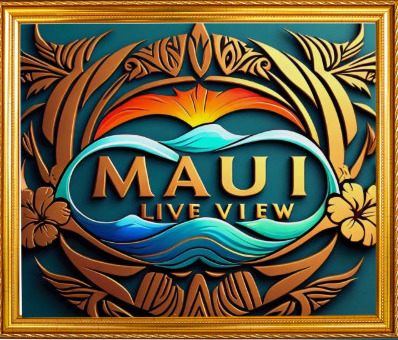Molokini, Maui Webcams
Inside Molokini Crater LIVE Loop (last hour)
Inside Molokini Crater Current Image
Molokini Cam 2 LIVE Loop (last 2 hours, looking at South Maui)
Molokini Cam 2 Latest Image (looking at South Maui)
Molokini Current Weather
Molokini: A Geological Wonder and Marine Sanctuary
Introduction: The Enigmatic Crater Island
Molokini, Maui Webcams. Jutting out of the cerulean waters off the coast of Maui, Molokini stands as a geological marvel and a haven for marine life. This crescent-shaped volcanic crater island has captivated visitors with its unique beauty and biodiversity for centuries. From its ancient origins as a volcanic vent to its modern-day status as a protected marine sanctuary, Molokini’s history is as intriguing as the underwater world that surrounds it.
Formation and Geological Significance
Molokini is believed to have formed over thousands of years through a combination of volcanic activity and erosion. The island is what remains of a volcanic crater that emerged from the ocean floor, with its crescent shape formed by the partial collapse of one side of the crater. Geologists estimate that Molokini’s formation occurred between 230,000 and 360,000 years ago during the Pleistocene epoch.
The unique geological features of Molokini make it an important site for scientific research and study. The island’s steep walls and submerged reefs provide valuable insights into the geological processes that shaped the Hawaiian Islands and the marine ecosystems that thrive within its waters.
Ancient Hawaiian Lore and Cultural Significance
In Hawaiian mythology, Molokini is believed to be the result of a battle between two powerful demigods, Māui and Kāne. According to legend, Māui, known for his feats of strength and bravery, threw his magic fishhook into the ocean, pulling up Molokini from the depths below. The island was said to be a favorite fishing spot for ancient Hawaiians, who revered it as a sacred site and a place of spiritual significance.
Molokini’s rich cultural heritage is reflected in its name, which is derived from the Hawaiian words “molo” (to pierce) and “kini” (many). This name likely refers to the island’s crescent shape and the abundance of marine life that inhabits its waters.
Whaling Era and Maritime History
During the 19th century, Molokini played a role in the whaling industry that thrived in the waters surrounding Maui. Whaling ships would anchor near Molokini to replenish their supplies, repair their vessels, and restock provisions before continuing their voyages across the Pacific. The island’s sheltered cove provided a safe harbor for ships seeking refuge from storms and rough seas.
Molokini’s strategic location made it a popular destination for sailors and traders traveling between Hawaii and other Pacific islands. The island’s natural beauty and abundant marine life also attracted artists, writers, and explorers who were drawn to its enchanting landscapes and captivating seascapes.
Modern Exploration and Conservation Efforts
In the mid-20th century, Molokini began to attract attention from scientists, researchers, and conservationists interested in studying its unique ecosystems and protecting its fragile marine habitats. In 1977, Molokini was designated a Marine Life Conservation District, making it one of the first marine sanctuaries in Hawaii. This designation helped to safeguard Molokini’s reefs and marine life from overfishing, pollution, and other human impacts.
Today, Molokini is managed by the Hawaii Department of Land and Natural Resources (DLNR) and the Division of Aquatic Resources (DAR) in partnership with local community organizations and conservation groups. Efforts to monitor and protect Molokini’s marine environment include regular surveys, patrols, and enforcement actions to prevent illegal fishing and other activities that could harm the island’s delicate ecosystems.
Recreational Activities and Tourism
Molokini’s crystal-clear waters and vibrant coral reefs make it a popular destination for snorkeling, scuba diving, and marine eco-tours. Visitors from around the world flock to Molokini to explore its underwater wonders and encounter a dazzling array of marine life, including colorful reef fish, graceful sea turtles, and elusive reef sharks.
Guided snorkeling and diving excursions offer visitors the opportunity to explore Molokini’s submerged reefs and underwater caves, while glass-bottom boat tours provide a glimpse into the island’s marine ecosystems without getting wet. The calm, protected waters of Molokini’s inner cove make it an ideal spot for beginners and experienced snorkelers alike to enjoy a safe and unforgettable underwater adventure.
Educational Outreach and Environmental Awareness
In addition to recreational activities, Molokini offers opportunities for educational outreach and environmental awareness programs aimed at fostering a deeper understanding of marine conservation and stewardship. Local organizations and tour operators provide educational resources, interpretive displays, and guided tours to educate visitors about the importance of protecting Molokini’s fragile ecosystems and preserving its natural beauty for future generations to enjoy.
Conclusion: Preserving Molokini’s Legacy
Molokini stands as a testament to the enduring beauty and biodiversity of Hawaii’s marine environments. From its ancient origins as a volcanic crater to its modern-day status as a protected marine sanctuary, Molokini continues to inspire awe and wonder in all who visit its shores. As stewards of Molokini’s legacy, it is our responsibility to protect and preserve its natural beauty and cultural significance for future generations to enjoy. With its pristine waters, thriving coral reefs, and abundant marine life, Molokini will forever hold a special place in the hearts of all who cherish Hawaii’s natural wonders.
For more information, visit the official Maui website.
